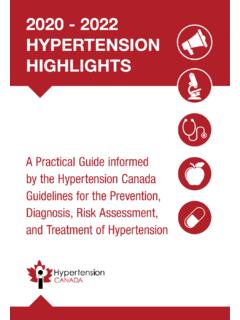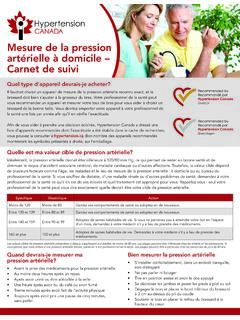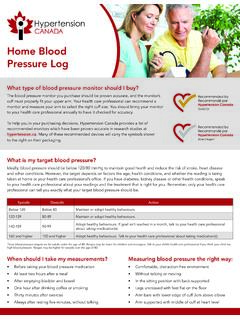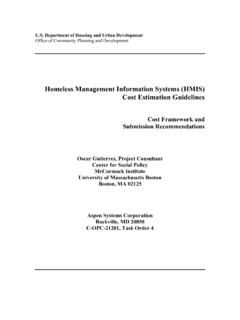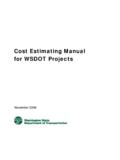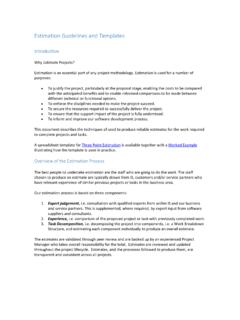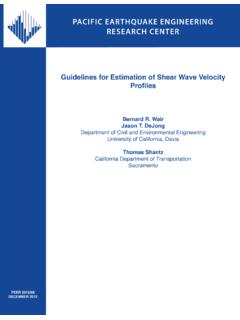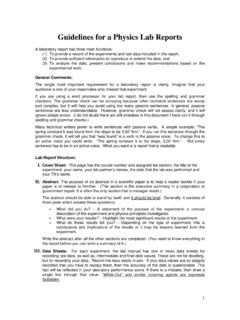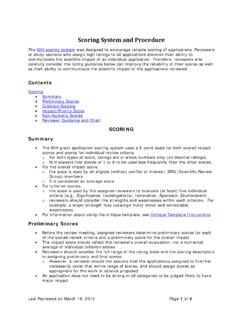Transcription of 2020 HYPERTENSION HIGHLIGHTS
1 A Practical Guide informed by the HYPERTENSION Canada guidelines for the Diagnosis, Risk Assessment, Prevention, and Treatment of Hypertension2020 HYPERTENSIONHIGHLIGHTS Arm bare and supported Use a cuff size appropriate for your arm Middle of the cuff at heart level Lower edge of cuff 3 cm above elbow crease Sitting position Back supported Do not talk or move before or during the measurement Legs uncrossed Feet flat on the floorAccurate diagnosis begins with accurate measurement:BLOOD PRESSUREMEASUREMENT TECHNIQUE1 HYPERTENSION 2020: HIGHLIGHTSThe HYPERTENSION Canada guidelines are the nation s clinical practice guidelines for the management of HYPERTENSION .
2 Developed by an expert volunteer network, the guidelines are evidence-based, rigorously reviewed, and updated regularly to keep Canada s health care professionals informed of best-practices in HYPERTENSION booklet HIGHLIGHTS the most critical and widely relevant aspects of the HYPERTENSION Canada guidelines . Beginning with proper measurement techniques for diagnosis and advancing through treatment and follow up, this booklet serves as a practical guide for health care full guidelines with supporting evidence, which also address complex specialty issues, can be accessed at Practical Guide informed by the HYPERTENSION Canada guidelines for the Diagnosis, Risk Assessment, Prevention, and Treatment of Hypertension2020 HYPERTENSIONHIGHLIGHTS2 PATIEN T E VA LUATIO NI.
3 MEASUREMENTThe use of standardized measurement techniques and validated equipment is recommended for all blood pressure (BP) methods. Automated office blood pressure (AOBP) Non-automated (manual) office blood pressure (Non-AOBP) Home Blood Pressure Monitoring (HBPM) Ambulatory Blood Pressure Monitoring (ABPM)Are you measuring correctly?Accurate diagnosis begins with accurate measurement. Evidence demonstrates that routine manual BP readings obtained in clinical practice are, on average, higher than when standardized measurement devices are used.
4 Inaccuracies in BP measurement can have clinical consequences such as incorrect diagnosis, misclassification of cardiovascular risk, or improper dosage of antihypertensive using electronic upper arm devices is preferred over auscultation. If electronic devices are unavailable, be sure to implement the recommended standardized technique for non-AOBP measurement. Preferred method for in-office measurementPreferred out-of-office methods for diagnosisIs arm size an issue?In patients with large arm circumference, when standard upper arm measurement methods cannot be used, validated wrist devices (utilized with arm and wrist supported at heart level) may be used for blood pressure is important to note that wrist devices are for estimation and not recommended for exact TECHNIQUE FOR AUTOMATED OFFICE BLOOD PRESSURE (AOBP) Measurements should be taken in a sitting position with the back supported using a validated device known to be accurate.
5 BP should be taken in both arms on at least one visit and if one arm has a consistently higher pressure, that arm should be used for BP measurement and interpretation. A cuff with an appropriate bladder size for the size of the arm should be chosen: bladder width should be close to 40% of the arm circumference and length should cover 80-100% of the arm circumference. The arm should be bare, supported, and kept at heart level. The lower edge of the cuff should sit 3 cm above the elbow crease with the bladder centred over the brachial artery.
6 The patient s legs should be uncrossed with feet flat on the floor. There should be no talking and the room should be quiet. The device should be set to take measures at 1-to 2-minute intervals. The first measurement should be taken to verify cuff position and validity of the measurement. The patient should be left alone after the first measurement while the device automatically takes subsequent readings. The average BP as displayed on the electronic device should be recorded, as well as the arm used and whether the patient was supine, sitting or Threshold for diagnosis:A mean SBP >135 mmHg or DBP >85 TECHNIQUE FOR NON-AUTOMATED OFFICE BLOOD PRESSURE (NON-AOBP) Measurements should be taken with a device known to be accurate.
7 BP should be taken in both arms on at least one visit and if one arm has a consistently higher pressure, that arm should be used for BP measurement and interpretation. A recently calibrated aneroid device or sphygmomanometer should be used. Ensure the device is clearly visible at eye level. A cuff with an appropriate bladder size for the size of the arm should be chosen: bladder width should be close to 40% of the arm circumference and length should cover 80-100% of the arm circumference. The arm should be bare, supported, and kept at heart level.
8 The lower edge of the cuff should sit 3 cm above the elbow crease with the bladder centred over the brachial artery. The patient should rest comfortably for 5 minutes prior to the measurement in the seated position with their back supported. The patient s legs should be uncrossed with feet flat on the floor. There should be no talking and the room should be quiet. The first reading should be discarded and the latter two threshold for diagnosis:A mean SBP 140 mmHg and/or DBP 90 for Diagnosis in Diabetes:A mean SBP 130 mmHg and/or DBP 80 note:Record BP to the closest 2 mmHg on the sphygmomanometer, as well as the arm used and whether the patient was supine, sitting or standing.
9 Record the heart vs. StandingThe seated BP is used to determine and monitor treatment standing BP is used to examine for postural hypotension, which may modify About Auscultation? Increase pressure rapidly to 30 mmHg above the level at which the radial pulse is extinguished. Place the bell or diaphragm of the stethoscope gently and steadily over the brachial artery. Open the control valve so that the rate of deflation of the cuff is approximately 2 mmHg per heart beat. The systolic level is the first appearance of a clear tapping sound (phase I Korotkoff).
10 The diastolic level is the point at which the sounds disappear (phase V Korotkoff). In the case of arrhythmia, additional readings with auscultation may be required to estimate the average systolic and diastolic pressure. Isolated extra beats should be ignored. Note the rhythm and pulse :If Korotkoff sounds continue as the level approaches 0 mmHg, listen for when the sound becomes muffled to indicate the diastolic the cuff partially inflated for too long will make sounds difficult to hear. Leave 1 minute between readings for optimal results. 6 HOME BLOOD PRESSURE MONITORINGHome blood pressure (home BP) monitoring can be used in the diagnosis of HYPERTENSION , and monitoring on regular basis should be considered for hypertensive patients with.
